|
Social News 29/4

A
section of the Cat Linh-Ha Dong Line
The capital city of The request was part of Deputy Prime Minister Trinh Dinh Dung’s directions on the three planned urban rail lines in He said the capital city is facing greater pressure on its transport system as a result of an increasing population and a growing number of private cars and motorbikes. Therefore the city needs to modernise its public transport system, including the urban rail network, in order to ease traffic congestion. Deputy PM Dung added that constructing rail lines requires huge costs while the state budget is limited, therefore it is necessary to call for private funding in order to finance rail projects and the city’s transport infrastructure in general. He asked the municipal authorities to promptly complete the project’s documents to submit them to the National Assembly for approval at its year-end meeting, while continuing with other tasks such as technical design. In his instructions, Deputy PM Dung also asked the Research contest launched to improve labour policies 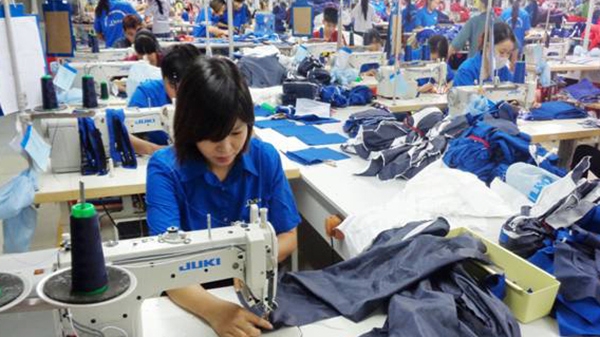
The contest’s research findings are expected to facilitate the
formation and implementation of labour policies.
The Ministry of Labour, War Invalids and Social Affairs, in coordination with the International Labour Organisation, recently launched a labour research contest on exploring industrial relations practices and its implementation towards better policies. The contest is eligible for Vietnamese citizens and research groups from Vietnamese organisations, who should focus their entries on five topics: the impacts of collective bargaining on wages and working conditions; renovated mechanisms for settling labour disputes on benefits through meditation; the relationship between social dialogue and business performance; trade union rights in The entries, which must be conducted after January 1, 2017, should be sent to the email address at han_contest@ilo.org, no later than June 25, 2018. The organising board will present prizes worth VND 100 million in total to the winners in the two categories of Best Research Proposal and Best Research Report. The contest was launched to raise the research capacity of Vietnamese researchers on labour issues, particularly those related to industrial relations, in a bid to seek feasible research findings for policy formation and implementation. 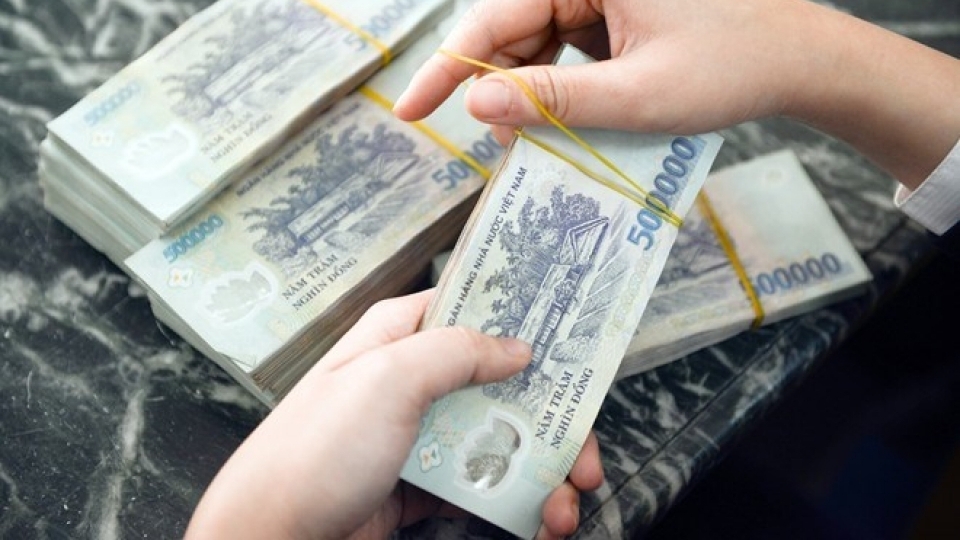
In the first quarter of 2018, regular
spending accounted for more than 76% of total expenditure.
The Ministry of Finance (MOF) has recently proposed
raising a number of taxes such as the environmental protection tax and the
value added tax.
One of the reasons cited by the MOF for the proposed
tax hikes is to restructure the state budget to ensure that the nation’s
finances are safe and sustainable. The effort will focus on fine-tuning the
tax policy and expanding the tax base, especially new sources of revenues in
line with international practices.
As revenues from international trade activities are declining
due to tariff cuts as a result of free trade agreements, the search for new
sources to offset the shortfall is a necessary and urgent task.
However, a budget has to cover both revenue and
spending. Measures to increase revenues are being proposed and implemented
aggressively while those aimed at restructuring expenditure have received
inadequate attention. A problem in the spending structure which is yet to be
resolved, is the immense proportion of recurrent spending.
In the first quarter of 2018, regular spending
accounted for more than 76% of total expenditure, while spending on
investment and development accounted for just 12%.
It is apparent that recurrent spending can be
significantly reduced immediately by streamlining and downsizing the cumbersome
administrative apparatus, as well as by practising thrift and preventing
waste in state budget spending.
Despite this, a government report suggests that many
ministries, agencies, and local authorities have not yet formulated their own
programmes on reducing spending.
While these units are inattentive to the issue and make
little effort in its resolution, it is unlikely that the budget deficit will
be reduced. The spirit of thrift in recurrent spending should be propagated
among the leaders of all units funded by the government budget.
Budget restructuring is an imperative to guarantee the
stability and sustainability of the nation’s finances. Therefore, in addition
to measures to increase revenues, it is necessary to take action to cut back
on recurrent spending.
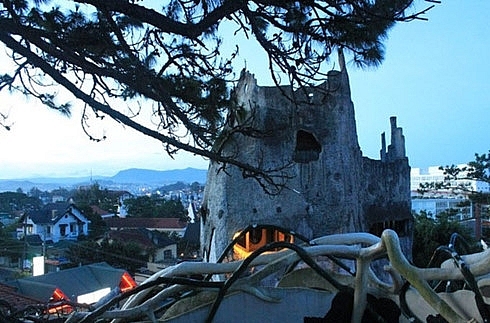
The magazine's new "A Spotter's Guide to Amazing
Architecture" introduces the world's "coolest" constructions
and where to see them.
Hang Nga Guesthouse, dubbed the "Crazy House"
in the
Around one kilometer from the center of Da Lat, the
guesthouse was officially opened in 1990, and has been compared to the
amazing architecture of world-acclaimed constructions such as the
The design by Vietnamese architect Dang Viet Nga was
inspired by the poetic natural scenery of the dreamy city and the
architectural works of Catalan master Antoni Gaud.
Once forgotten, it has now emerged as one of the most
popular tourist attractions in
Lonely Planet list also includes the Taj Mahal (India),
Sydney Opera House (Australia), St Basil's Cathedral (Russia), Pena Palace
(Portugal) and Lincoln Cathedral (UK)
This is not the first time the guesthouse has earned
global plaudits.
The UK-based travel magazine last year hailed Vietnam’s
astonishing building as a secret marvel, saying “Crazy House is different
from every angle: on one side, warped walls seem menacing and windows glare
like eye sockets; from another, traditional Vietnamese designs adorn the
eaves.”
In 2016, the leading
Chemotherapy applied for treating
cancer patients at final stage
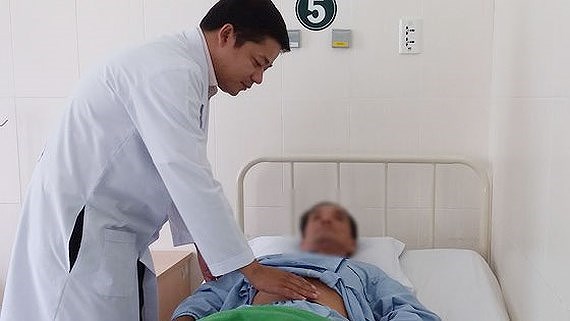 Hoan My Cuu Long Hospital in the Mekong Delta City of Can Tho said it has used chemotherapy for treating cancer patients. This is considered as a great progress in cancer treatment. Chemotherapy means to use chemicals for treating cancer patients. The chemicals will kill cancer cells or prevent them from separating into more diseased cells. The method is used to shrink tumors and/or stop the cancer from growing and spreading. This can help the person with cancer feel better and live longer. This method can be applied for treating all kinds of cancers especially stomach, colorectal cancer, or breast cancer, lung cancer and bladder cancer. Dr. Tang Van Phong said that chemotherapy in treating colorectal cancer plays an important role because it reduces relapse and live longer amongst cancer patients of third and second stage. Doctors will inject chemicals to patients who need not to stay in hospitals to save cost. Film screening program celebrates national holidays 
A scene in the film Me oi con da ve (Mom,
I came back home)
A film screening program marking national holidays in April and May will be held from April 27-May 23. Film lovers will have a chance to enjoy selected movies themed on traditional history, revolutionary soldiers, country’s construction, generations of youth in the war time and renewal period, such as Me oi con da ve (Mom, I came back home), Giac mot tho cam (Dream of brocade), Thoi tre trung soi noi (intense youth) and among others. Programs maintaining safety, public order and security for ethnic groups in remote mountainous areas will be also presented to audiences. The event is organized by the Vietnam Cinema Department in coordination with film distribution companies and cinemas across the country. Dong Thap culture promoted in HCMC 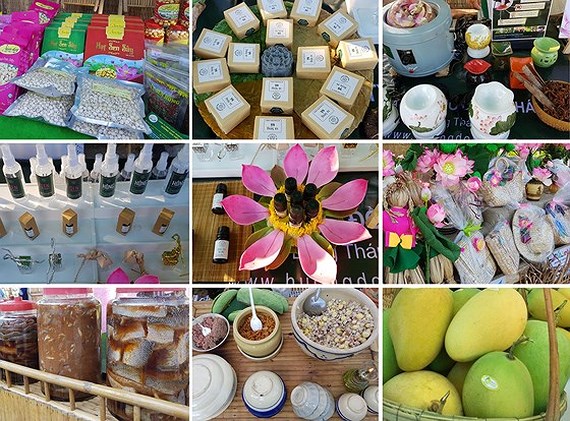 An exhibition presenting cultural characteristics of the Mekong Delta Dong Thap culture promoted in HCMC The event aims to promote and introduce typical products, traditional craft villages, images of the land and people of Dong Thap as well as enhancing the development of the provincial tourism industry. Visitors will have a chance to enjoy a corner of countryside market, various kinds of flowers of Sa Dec traditional flower villages, products made of lotus and rice, the provincial popular agricultural products, local special dishes; and join in art performance and trade promotional exchange. Highlights of activities are Don ca tai tu (Southern folk music) performance by the Dong Thap art troupe and an art program performed by the Cho Lon Theater. The event is co-organized by the People’s Committee of Dong Thap province, Vietnam Signature Joint Stock Company. Magnifique Wedding Fair at
The
The Magnifique Wedding Fair claims to be the most exciting event for soon-to-wed couples who are looking for a remarkable romantic touch on their big day. Grooms- and brides-to-be will be impressed by the gorgeous Accompanying the luxurious setup, the wedding fair will converge a range of wedding services from the city’s leading wedding suppliers like the Tra Que studio, Sir Tailor wedding suit, Tung Vu bridal gowns and Louis Wu photography. The attendees will have chances to win round-trip air tickets sponsored by Vietnam Airlines to travel anywhere in The
Fundraising concert organized for My
Lai Peace Park
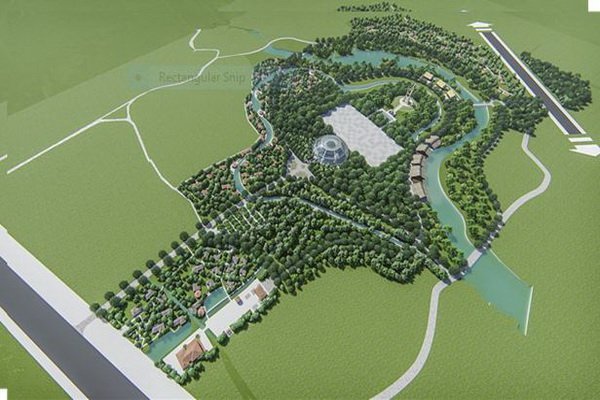
An artist’s impression of
My Lai Peace Foundation in coordination with HCMC Ballet Symphony Orchestra and Opera (HBSO) will organize the “Desire for Peace” concert at the HCMC Opera Theater on April 30, 2018, with an aim to raise funds for Starting from 7:30 p.m., the concert will feature some songs praising the love for the country such as Viet Nam Que Huong Toi (Vietnam, my country) by Do Nhuan, Tieng Goi Tu Long Dat (Sound from underground) by Pham Minh Tuan and Noi Vong Tay lon (The great circle of Vietnam) by Trinh Cong Son. The project requires an investment of VND348 billion (US$15.3 million) and is predicted to be complete in three to five years.
My Lai Peace Foundation is a non-government and
non-profit organization founded in late 2016. Its mission is to promote the
cultural and educational development, heal war wounds and support the
community in the Southcentral
Driving schools focus on guaranteed
pass instead of skills in HCM City
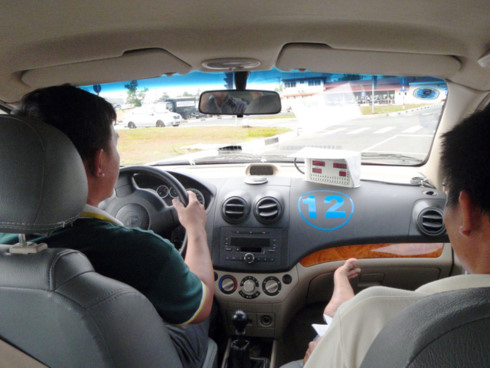
A man practices his
driving skills in
Many driving schools in
These centers often encourage learners to pay
additional fees aside from tuition in return for guaranteed success in theory
tests required for driver’s licenses.
Those agreeing to pay for the easy exams are now facing
an inevitable consequence as they find themselves lacking the necessary
skills and knowledge to drive an automobile in real life.
Nguyen Thanh Tung, who lives in Go Vap District,
recalled paying VND4 million (US$176) for a driving course at a local
training center.
Tung was also told to give the facility another VND1.5
million (US$66) if he wanted to pass his theory test without having to
actually study.
After agreeing to the request, Tung found himself doing
literally nothing during the exam.
As the theory tests were computer-based, all of his
answers were automatically completed, he said.
Similar, Bui Thi Hoa, an office worker in the southern
metropolis, said she had picked a VND5.5 million (US$242) training course to
prepare for her driver’s license test.
The course included 32 hours of practice and four
theory lessons, as well as a 100% guaranteed pass, Hoa said.
However, she was required to pay an additional VND2.9
million (US$128) for examination fees and necessary documents.
If Hoa did not have time for the compulsory heath
check-up, the center could also take care of that problem for just VND190,000
(US$8).
After attaining her driver’s license, Hoa discovered
that she did not have enough theoretical knowledge to drive an automobile.
She often broke traffic laws and could not properly
perform basic moves such as backing up or making a U-turn.
Following repeated fines for her traffic violations,
Hoa decided to study again by herself and ask a friend to help her practice
driving.
Meanwhile, Phan Quoc Bao, a resident in Phu Nhuan
District, said he had been scammed by a driving school based in Thu Duc
District.
Bao was not given enough time for his practice, thus
being unable to know how to drive at the end of the course.
Replying to his complaint, an employee of the school
asserted that they had fulfilled their responsibilities during the training
course and suggested that Bao pay for another course if he fails his driving
test.
According to Tran Quoc Khanh, chief inspector of the
municipal Department of Transport, the agency has received many reports
regarding irregularities at local driving schools.
The transport department is expected to work with other
competent agencies to carry out comprehensive inspections at these
facilities.
If necessary, officers will also disguise as learners
to detect violations, said Trinh Van Minh, deputy head of the office in
charge of issuing driver’s licenses under the transport department.
3 new vaccines to be used in
national expanded vaccination programme

Khanh Hoa province braces for
natural disasters

The People’s Committee of the central coastal
Authorities at all levels should inspect and identify
flood-risk and landslide-prone areas while setting up plans to evacuate local
residents from regions that are affected by rising sea levels spurred by
typhoons to safer places.
Due attention must be paid to arranging relevant forces
to enhance inspections and speed up measures preventing natural calamities in
dangerous localities.
In case of storms and tropical depressions, communal
authorities should join hands with the border guards to grasp the exact
number of aquatic breeding cages, fishing vessels and local fishermen who are
operating offshore. Prompt support should be put in place for the fishermen.
Training and rehearsals should be organised for
relevant forces while stockpiling of essential items like food, fuel,
medicine and water must be paid due attention.
Khanh Hoa is currently home to nearly 30 reservoirs
with total capacity of 250 million cubic metres, many of them have been
degraded and pose great threats to local livelihoods. However, limited
financial resources hamper repairs of the reservoirs.
Relevant authorities are required to manage and give
timely response in case the reservoirs break out.
The provincial military high command is asked to set up
rational search and rescue plan and help localities recover the aftermath of
the disasters.
Last year, storm Damrey, the 12th typhoon hitting
According to reports of localities and ministries, up
to 27 of the deaths were in the province, where the centre of Damrey was
recorded when the storm made landfall.
High-rise residential buildings may
not be allowed in urban centers
The Government has tasked the Ministry of Transport to
coordinate with relevant ministries, agencies and Ha Noi and
Based on the review outcomes, the Ministry of Transport
will develop a new resolution and submit to the Government before June 30
this year.
The new resolution must include a series of solutions
to ease pressure on the cities, including putting stop to construction of
high-rise residential buildings in urban centers, the Government ordered.
Alternative education approaches
proving popular
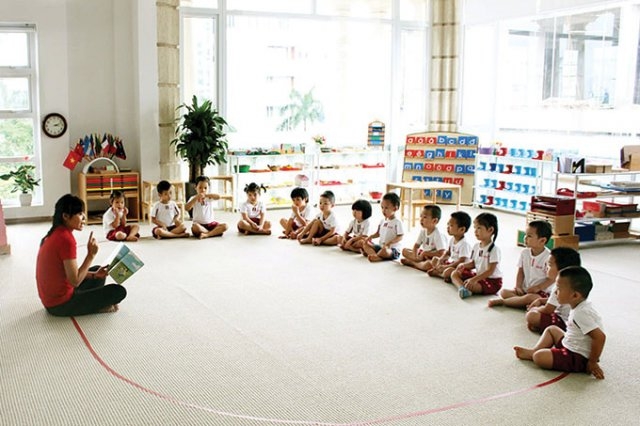
Modern Montessori International (MMI), a Singaporean
company specializing in early childhood education, opened its largest
overseas pre-school campus at the Vietnam-Singapore Industrial Park (VSIP) in
southern Binh Duong province in mid-2017. The new campus was built with
initial investment of $2 million and is the company’s first in
MMI Vietnam is one of many schools offering the
Montessori method of education. For the past ten years, people in
Montessori is a method of education that is based on
self-directed activity, hands-on learning, and collaborative play. In
traditional education, adults decide what children need to learn and the
ability to retain and reproduce information is used as a measure of academic
success. The teacher is the active provider of information and children are
passive receivers. In Montessori classrooms, meanwhile, children make
creative choices in their learning, while the classroom and the teacher offer
age-appropriate activities to guide the process.
While parents in
Ms. Le Minh Trang, a 29-year-old in
STEM (Science, Technology, Engineering and Mathematics)
is also a popular education program in
To develop the method, during the 2016-2017 academic
year the British Council in Vietnam worked with the Ministry of Education and
Training (MoET) to implement a pilot project entitled “Applying the UK STEM
Approach in the Vietnam Context in 2016-2017”. The project featured 15
State-owned and private secondary schools and high schools in five provinces
in the north of
On May 4 last year, Prime Minister Nguyen Xuan Phuc
issued a directive on tackling the challenges posed by Industry 4.0,
including solutions for enhancing STEM education in high schools.
Besides Montessori and STEM, another method providing
knowledge in social sciences and soft skills training has also received a
great deal of attention from parents and students in recent times. These life
skills training centers, summer camps, and army training camps are
well-suited and professionally-invested by the private sector and have
attracted large numbers of students. For example, established in 2011, the
Mr. Luong Dung Nhan, Deputy Director of Training at
ATY, told VET that modern life significantly reduces the amount of time
parents spend with their children, and children’s study time also accounts
for a very high proportion of their lives. “This leads to a lack of
opportunities for children to explore their own abilities, to understand and
master their emotions, to handle the diverse needs of life,” he said. “This is
the main reason we have introduced such programs.”
Education has always been given great importance in
Recent research from Taylor Nelson (TNS) showed that
the highest expenditure by Vietnamese people is on education, accounting for
47 per cent of the total. Families are clearly increasing their investment in
the education of their children, making the private education market quite
robust. “Parents are now choosing private schools for their children because
they want a greater choice of good education programs,” Ms. Nguyen Thi Kieu
Oanh, Chairwoman of the
Nearly 60 per cent of
Mr. T Chandroo, CEO and Chairman of the MMI Group, told
local media that the reason behind the expansion in Vietnam was the market’s
enormous potential, with the ratio of the population aged below 35 promising
current and future demand for early childhood education. “Rising income
levels and growing affluence have also led to an increase in young
professionals with higher purchasing power who wish to provide their children
with the best learning opportunities,” he said.
Investors can also find new opportunities from new
government policy. Education institutions registered to operate for less than
20 years are no longer obliged to build their own facilities and are allowed
to rent suitable schools, buildings or workshop areas for at least five
years. Investors are also allowed to expand their brand by opening other
campuses in the same city or elsewhere.
It’s also worth noting that
Figures provided by the Ministry of Planning and
Investment’s Foreign Investment Agency show that Vietnam had attracted some
$761.4 million in foreign direct investment (FDI) via 386 projects in the
education and training sector as at February. Demand for a high-quality
education is reaching new heights, providing favorable opportunities for
foreign investors to enter the market.
Education is an attractive sector for investment in
Mr. Nhan from ATY said that while there are many new
programs available, the number of students attending is still low, due to
educational models like military semesters being extracurricular activities
that can only be attended during the student’s free time.
Fees are also a matter of concern. “I have two
children. My family’s monthly income is about VND30 million ($1,300), so all
our spending must be carefully calculated,” said Ms. Trang. Monthly
pre-school fees at MMI Vietnam are around $600, for example, which are out of
reach for most middle-income families.
Though investors can find new opportunities offered by
new government policy, there are also some legal issues that need to be
considered. According to Decree No. 73/2012ND-CP, dated November 15, 2012,
only foreign children can attend international pre-schools. Vietnamese
children under five years old are not allowed to enjoy any form of general
education provided by foreign investors. Regarding teacher qualifications,
the decree stipulates that foreign teachers must have at least five years of
experience before they can teach at Vietnamese education institutions or at
foreign-invested schools, colleges and universities.
VNN
|
Thứ Hai, 30 tháng 4, 2018
Đăng ký:
Đăng Nhận xét (Atom)
Không có nhận xét nào:
Đăng nhận xét